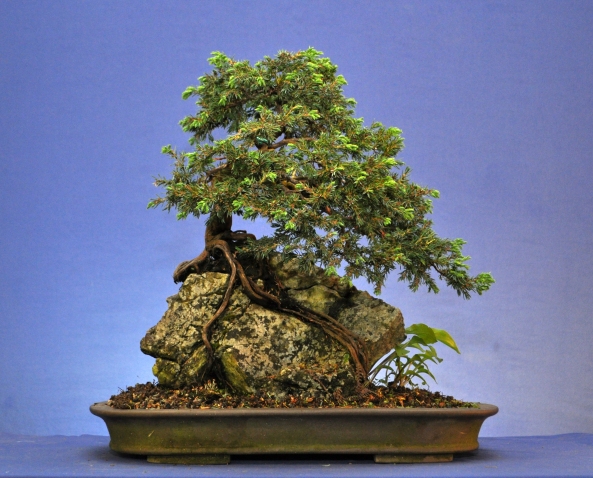Before I introduce my tree, I'll show a few root-over-rock bonsai that inspire me. This little English Elm belongs to Harry Harrington and he has written a very informative photo progression series on this tree. Also check out his photo series from the Philippine Bonsai & Suiseki exhibit for some very unusual and interesting examples of this and other bonsai styles.
This juniper was featured on Bonsai Eejit. I can just picture this growing along the Minister Creek in the Allegheny National Forest, where I've backpacked extensively, although in Western Pennsylvania it would be more likely to see a hemlock.

Here's my hornbeam (carpinus caroliniana) growing on a chunk of rock from Seneca Rocks in West Virginia. When I was a resident assistant at Grove City College, a freshman in my dorm went climbing there, and brought it back for me since he knew I liked rock climbing. I thought it appropriate to give in more monumental stature by growing a tree over it.
The first two years this was in a pot, but the trunk wasn't thickening up as much as I'd like, so I plan on leaving it in the ground another year. In late winter 2014 I will chop the trunk back below the lowest branch and start developing a new branch structure.
By October 21st, the trunk and branches had thickened up quite a lot more than in June. Here is a shot from what I think will be the front.
And here are some nice fall colors.



















